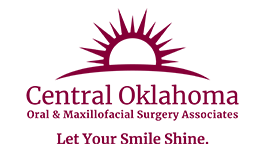15 Jun How is CT technology used in treatment planning for oral surgery?
 CT imaging technology can greatly improve patient care by streamlining the treatment planning process for an oral surgeon. This type of technology allows our surgeon to see a very detailed view of a person’s unique oral anatomy. CT images are three-dimensional and therefore display a comprehensive view of the entire oral cavity. This technology is used to diagnose oral disease, plan treatment, and simulate surgical procedures.
CT imaging technology can greatly improve patient care by streamlining the treatment planning process for an oral surgeon. This type of technology allows our surgeon to see a very detailed view of a person’s unique oral anatomy. CT images are three-dimensional and therefore display a comprehensive view of the entire oral cavity. This technology is used to diagnose oral disease, plan treatment, and simulate surgical procedures.
Our practice utilizes a full-cranial cone beam scanner to capture precise images that can help us assess the health of structures not visible at the surface, such as facial bones, the roots of teeth, and the airways. CT imaging has applications in treating TMJ disorder, malocclusions, and injuries caused by facial trauma.
CT Images and Benefits
Cone beam technology produces images from a variety of angles that are more anatomically correct and clear than images captured in two-dimensional format. From there, the images are sent in digital form to a computer so that they can be displayed on high-resolution screens. This allows our team to zoom in and out on certain areas of the oral cavity for accurate diagnoses and serve as an educational tool when explaining issues and treatment options to our patients. Beyond the accurate depictions this technology provides, digital imaging is convenient for sharing with other dental professionals we may work with such as general dentists and orthodontists.
Treatment Planning
Since an oral surgeon provides incredibly focused treatment, such as dental implant placement and corrective jaw surgery, treatment planning is an important aspect of planning for a patient’s surgery. Prior to surgery, our team will use the images produced by the cone beam to become familiar with a patient’s anatomy so that, for example, the exact location of an implantation site can be determined. Treatment planning can also involve the simulation of a procedure. Using advanced software, we can practice complex procedures using three-dimensional generated images before a patient even enters our office.
We embrace the latest innovations in technology and surgical methods so that our guests enjoy excellent oral care. Call our office at Central Oklahoma Oral and Maxillofacial Surgery Associates to learn more about our services or to reserve an appointment.
